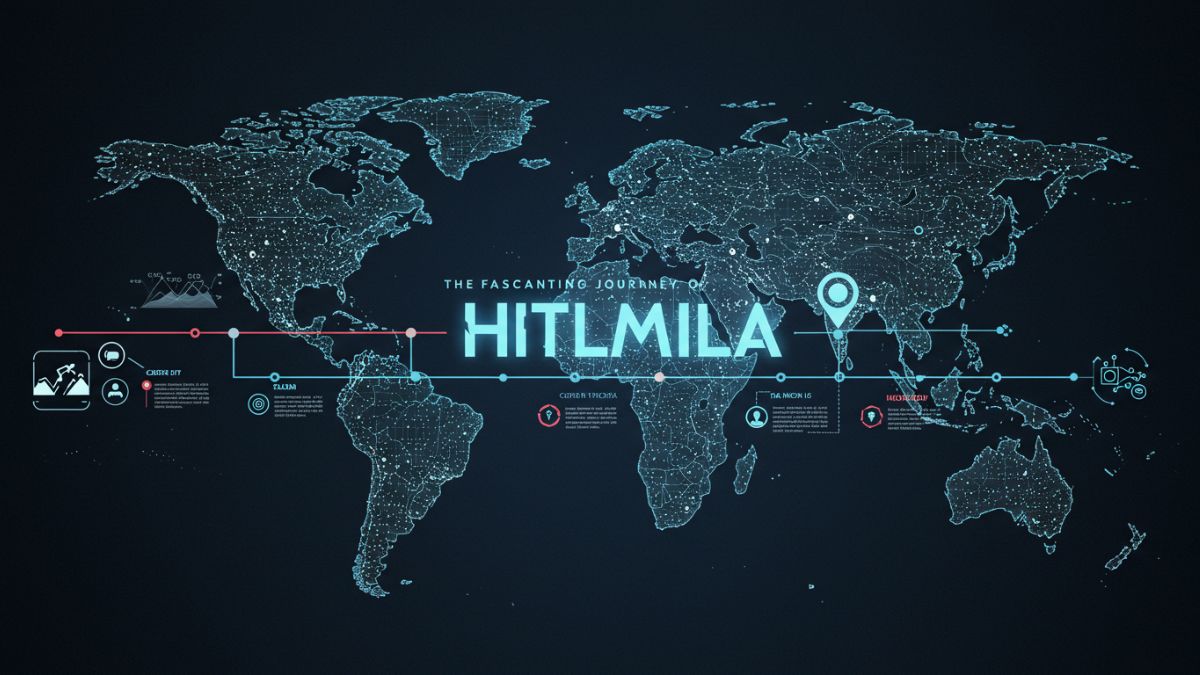Introduction to Hitlmila
The concept of Hitlmila is gaining traction as an innovative force bridging the gap between technology and culture. In a world where rapid technological advancements often overshadow cultural preservation, Hitlmila emerges as a unique approach that harmonizes both aspects. It focuses on integrating traditional cultural values with cutting-edge technologies, ensuring a balanced and progressive society. The philosophy behind Hitlmila promotes sustainability, inclusivity, and the ethical use of technology while preserving heritage and identity. Understanding its significance can help individuals, businesses, and policymakers develop more meaningful innovations that benefit society as a whole.
The Origins and Evolution of Hitlmila
Hitlmila is not a new phenomenon but rather an evolved ideology that stems from the need to adapt to modern advancements without losing cultural authenticity. Historically, civilizations have leveraged technology to enhance their way of life while staying true to their traditions. From the invention of the printing press that enabled the widespread dissemination of cultural knowledge to the digital revolution that transformed global communication, technological progress has always played a role in cultural evolution. Hitlmila takes this concept a step further by advocating for a conscious and mindful approach to technological integration, ensuring that cultural identity is not compromised in the process.
The Role of Hitlmila in Modern Society
Hitlmila plays a crucial role in shaping modern society by providing a framework that balances innovation with tradition. It encourages industries such as education, healthcare, and entertainment to incorporate cultural elements into their technological solutions. In education, for instance, digital platforms can be used to preserve and teach indigenous languages, ensuring they remain accessible to future generations. In healthcare, traditional healing practices can be combined with modern medical advancements to create holistic treatment methods. The entertainment industry can also benefit from Hitlmila by promoting culturally diverse content that resonates with a global audience while preserving authenticity.
How Hitlmila Impacts Business and Industry
Businesses and industries that embrace Hitlmila can achieve sustainable growth while fostering cultural appreciation. Companies that integrate cultural awareness into their technological innovations can create products and services that resonate with diverse consumer bases. For example, the fashion industry can use AI-driven design tools to incorporate traditional patterns into modern clothing styles, creating unique and culturally significant fashion statements. Similarly, the food industry can utilize smart technology to preserve and promote traditional culinary techniques, ensuring that heritage dishes remain relevant in today’s fast-paced world. By adopting the principles of Hitlmila, businesses can establish a competitive edge and build strong connections with their audiences.
The Ethical Considerations of Hitlmila
One of the core principles of Hitlmila is ethical responsibility in technological advancements. In an era where digital privacy concerns, AI biases, and cultural appropriation are growing issues, Hitlmila provides a guideline for responsible innovation. It emphasizes the importance of ethical AI development, where cultural sensitivities are considered in machine learning algorithms. It also advocates for fair representation in digital media, ensuring that marginalized cultures are not exploited but rather celebrated. Ethical considerations in Hitlmila extend to ensuring that traditional knowledge is protected and credited appropriately, preventing cultural exploitation and promoting fair collaborations.
The Role of Artificial Intelligence in Hitlmila
Artificial intelligence (AI) is a powerful tool that can either support or undermine the principles of Hitlmila, depending on how it is used. AI-driven applications can be leveraged to preserve endangered languages, digitize historical artifacts, and create virtual experiences that bring cultural heritage to life. However, without mindful implementation, AI can also contribute to cultural homogenization, where local traditions are overshadowed by globalized digital trends. Hitlmila advocates for the responsible use of AI in ways that enhance and celebrate cultural diversity rather than erode it. Ensuring diverse data representation and inclusive development practices are key factors in aligning AI with Hitlmila’s vision.
The Impact of Hitlmila on Digital Content Creation
Content creation has undergone a significant transformation with the rise of digital platforms. Social media, streaming services, and online publications have changed the way cultural narratives are shared and consumed. Hitlmila encourages digital content creators to produce materials that honor cultural authenticity and educate audiences about diverse traditions. Whether through storytelling, documentaries, or interactive media, incorporating cultural elements into digital content fosters appreciation and awareness. The rise of virtual reality (VR) and augmented reality (AR) also presents opportunities for immersive cultural experiences, allowing users to engage with traditions from around the world in a meaningful way.
Challenges in Implementing Hitlmila
Despite its many benefits, implementing Hitlmila comes with its own set of challenges. One of the primary obstacles is resistance to change, as some industries may view cultural integration as a hindrance rather than an asset. Additionally, there is a lack of standardized frameworks to measure the impact of cultural inclusivity in technology. Funding and resources for cultural preservation initiatives also remain limited, making it difficult for smaller organizations to adopt Hitlmila-driven strategies. Overcoming these challenges requires collaboration between governments, private sectors, and cultural organizations to create policies and initiatives that support the seamless integration of culture and technology.
The Future of Hitlmila
As technology continues to evolve, the principles of Hitlmila will become increasingly relevant. Future innovations such as blockchain technology can be utilized to protect intellectual property rights related to cultural knowledge, ensuring that communities retain ownership of their traditions. The expansion of the metaverse also presents new opportunities to create digital spaces that celebrate cultural diversity and provide educational experiences rooted in heritage. With continuous advocacy and strategic implementation, Hitlmila has the potential to reshape industries, create more inclusive societies, and foster a greater appreciation for cultural heritage in the digital age.
Conclusion: Embracing Hitlmila for a Sustainable Future
Hitlmila serves as a vital bridge between technology and culture, ensuring that progress does not come at the expense of tradition. By integrating cultural awareness into technological advancements, individuals and industries can create innovations that are both meaningful and sustainable. Whether in business, education, healthcare, or digital content creation, the principles of Hitlmila provide a framework for responsible and ethical development. As society continues to navigate the complexities of modernization, embracing Hitlmila will be essential in fostering a world where culture and technology coexist harmoniously, benefiting present and future generations alike.





